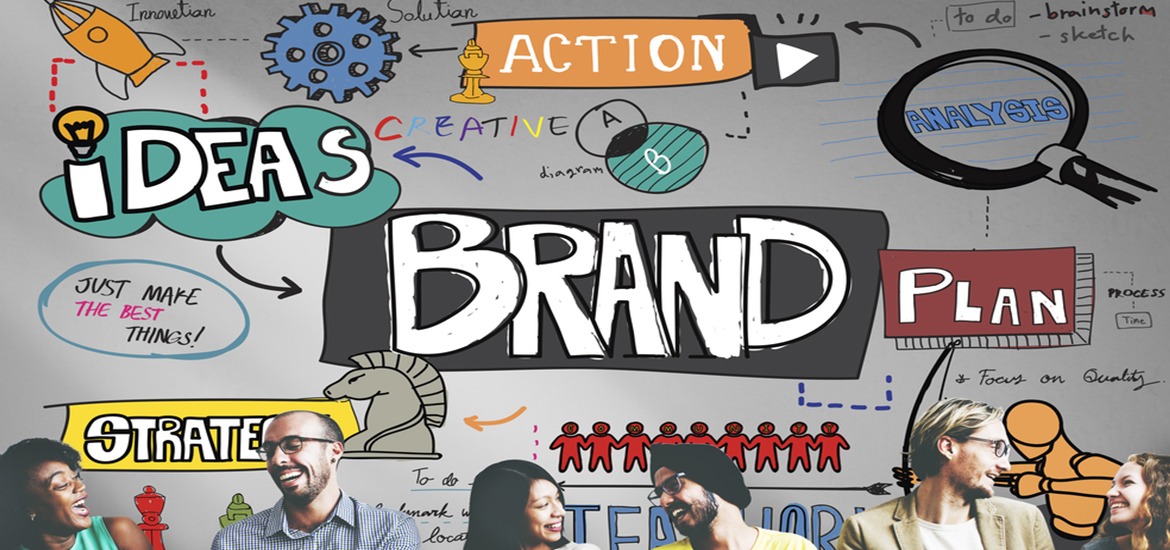Brands have become ubiquitous in people’s lives. If we take a minute to look around us, we’d see that we are surrounded by brands in the form of different products. From dictating our shopping preferences to becoming a household name, brands have altered our way of living in numerous ways. But if we just stop and ask ourselves what exactly a brand is, do you think we would have a specific answer. Probably no. Or maybe we will have different versions of its definition. So why is it so difficult to define what a brand is?
It’s said that while products are made in factories, brands are made in consumers’ minds. These are thoughts or perception about a company that we have created as a response to the information or service that was given to us or the quality of product that was sold to us by the company. Hence, brand is not a physical entity but a mental scenario. Before understanding what a brand is, let’s be aware of what it isn’t.
Misconceptions about a brand:
Since the term ‘brand’ has become so common in use, we hardly bother to think what it exactly means. Many people believe that brands are logos and brand names with trademark registration online. However, it is not true. While the logo does form a part of the brand identity and contributes immensely in building a brand image, calling the logo as a brand is a misconception. Similarly, the brand is not the company name. It is not a website, tagline or ad campaign run by a company. In fact ‘brand’ is not even dependant on what the company wants to portray. It is almost the opposite.
Demystifying the term ‘brand’:
The word ‘brand’ derives originated from ‘firebrand’ which was actually a burning piece of wood that was used to permanently mark articles, livestock and even slaves! The purpose of the mark was to assert ownership. Later, as mass production of goods started happening, we saw producers ‘branding’ their goods by burning their marks on the boxes and crates. Gradually over the years, brand developed into a sign of quality rather than ownership. Branding was used to distinguish high quality expensive products from their alternatives. The use of identity marks became an important aspect in business. In 1876, Bass and company’s red-triangle brand became the first logo to have trademark registration issued by the British government.
With the rise in consumerism, slowly and steadily companies tried to associate their products with people’s emotions and personalities. The focus shifted from selling the functional benefit of the product to shaping the perception of the consumer. Companies offering good quality products tried to understand consumer emotions and strategized and advertised accordingly. This fetched them consumer loyalty to an extent where consumers were even ready to pay a little more for branded products than the generic variants available in the market.

As market evolves, branding is taking different forms. This brings us to the earlier question i.e. ‘what is a brand?’ Contrary to the popular belief, brands are controlled by the consumers and not the company. By ‘controlled’ it is meant that brands are built based on the gut feeling of the consumers. It is the set of notions that they have in their minds for a particular entity in the market. Brands are processed not within the walls of a company office but in the minds of the people. In fact, every customer may have a different view of a particular brand.
Brands in today’s world:
Today, consumer choices have increased manifold. Companies are providing variety of products with parallel standard of quality. Hence, in a world of stiff competition, brands which are more articulate are able to connect better. Brands that are able to pull the right chords in the hearts of their target audience perform much better in the market. Apart from quality and consistency, companies today need an ‘out of the box’ marketing strategy to reach out to their customers. While new brands are pacing up their efforts to design successful marketing strategies, older ones are trying to keep pace with the changing market conditions along with maintaining their long association with people.
Branding is a never-ending process. But to start with a strong brand identity is the first milestone in the branding process. As you step ahead to launch your brand, Logobar can be your one-stop-shop for creating all elements of a brand identity, from logo designing to trademark registration. With a strong brand identity and smart brand management, your brand will eventually make space in people’s minds and hearts.

